Bobbins aren’t as straightforward as you may think. Learn the secrets behind
this small but vital element of machine embroidery to improve your stitchouts
BOBBIN TYPES
Embroidery machines typically use L-class, M-class or 15-class bobbins.
Most home embroidery machines use the standard L-class bobbin, which has
a ¾” diameter. The M-class bobbin has a 1″ diameter. The L-class and 15-class
bobbins are often thought of as interchangeable
because they have the same diameter; however, the 15-class bobbin has a 3⁄8″ height compared to the 5⁄16″ height of the L-class bobbin.
SELF-WOUND BOBBINS
Some machines allow bobbins to wind during embroidery. Others must be wound while the machine is stopped. Wind bobbins at a moderate speed so the thread is wound
evenly and not stretched. Wind extra bobbins or use prewound bobbins to
save time during embroidery.
PREWOUND BOBBINS
Most prewound bobbins have a smooth, easy wind. Follow the manufacturer’s
instructions to insert prewound bobbins into your machine.
Machine-branded bobbins are usually inserted with the company logo facing
out. Prewound bobbins usually have cardboard or plastic sides; some may
not include sides at all. Prewound bobbins typically hold up to three times
more thread than self-wound bobbins.
Cardboard-sided bobbins provide more friction with less spinning. They
sometimes fit too tightly in the machine, preventing free bobbin rotation.
The cardboard sides also may cause the bobbin to bounce.
Cardboard-sided bobbins don’t allow light to penetrate inside the machine,
which impairs the automatic bobbinsensor function on some machines.
The sensor often thinks the bobbin is always full, preventing the machine
from communicating a low-bobbin warning. If this happens, remove the
cardboard sides or use the bobbin until the thread runs out.
Plastic bobbins are reusable. Because they’re smooth, they may continue
spinning after the machine stops.
All L-sized plastic-sided bobbins have the same diameter and core size, but some
are slightly wider to allow more thread capacity

BOBBIN THREAD
Some machine manufacturers suggest specific bobbin thread or prewound bobbin brands for their machines. Bobbin thread is available in several fiber contents and weights.
Polyester thread is either made of spun polyester, cotton-wrapped polyester or continuous-filament polyester.
Poly-spun thread is thin, lightweight and strong. Continuous-filament thread is stronger and produces less lint than the other types, but is typically more expensive. Continuous-filament thread works especially well with metallic and heavy cotton top threads.
Cotton bobbin thread is soft to the touch, while polyester bobbin thread is coarse. When using fine-weight cotton bobbin thread, make sure it’s
good quality and from a long staple. Clean the machine frequently to minimize lint build-up.
Fiber content can differ in the top and bobbin thread. When mixing thread weights, adjust either the top or bobbin thread tension, keeping in mind that
most machine manufacturers prefer that bobbin tension only be adjusted by trained service technicians. If you decide to adjust your bobbin tension yourself, mark the manufacturer’s original bobbin tension setting by marking the tension screw points. Moving the tension screw counterclockwise loosens
the tension, while moving it clockwise tightens the tension. Remember the old adage: Righty tighty, lefty loosey. A very small adjustment makes a big difference in bobbin case tension, so only make minor adjustments. The upper thread tension is adjustable on the machine
touch screen, if applicable.
If the tension is changed frequently, some manufacturers recommend buying a separate or specialty bobbin case. Heavier threads may require specialty bobbin cases, which have larger escapements and tension bypasses. Specialty bobbin cases often come in different colors to
make them easily distinguishable.
Bobbin thread is available on spools, cones or prewound bobbins. Higher thread numbers indicate the thread
fineness; for instance, 60-wt. thread is finer than 40-wt. thread, 50-wt. is finer than 30-wt. and so on. Typical embroidery bobbin thread is 60-wt. Only use bobbin thread that’s designed for
machine embroidery
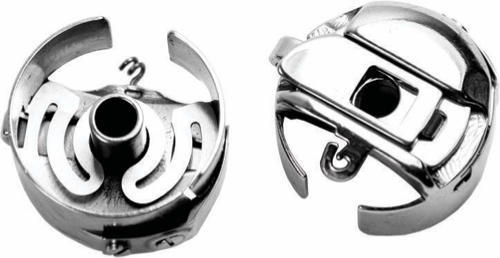
BOBBIN CASES
Drop-in bobbin systems have bobbincases that remain stationary during stitch formation, which is referred to as the inner hook rotary system. The outer hook moves in a counterclockwise motion to form the stitch while magnetics are partly responsible for keeping the inner hook in place. Plastic bobbins don’t interfere with
the hook system mechanics. Metal bobbins create additional drag because they magnetize themselves
to the bottom of the inner hook, somewhat impeding the draw of the thread. Most machines with a drop-in bobbin system have a transparent bobbin cover.
Vertical bobbin systems work with the stationary outer hook and the inner bobbin case, rocking back and forth in an oscillating motion, or in a full 360º circle for a rotary hook system. The system catches thread loops brought through the fabric by the needle and carries it to the bobbin thread. Before the needle retracts, the loop is pulled tight by the take-up lever. The sequence is repeated each time the needle enters the fabric.
BACK LASH
A back-lash spring is part of some bobbin cases that have a vertical rotary hook system. The spring prevents the bobbin from back spinning at high embroidery speeds.
The bottom tension is produced by a spring-steel metal plate that presses
against the casing that holds the bobbin in place.
The tension is usually regulated by a tiny screw in the bobbin case or casing area. The tension anchors the lower thread in position so the upper thread can make a stitch around it. For firmer tension, tighten the screw by turning it to the right; for less tension, loosen the screw by turning it to the left.
The direction the bobbin thread winds into the casing area is not universal
on all machines. If the tension gets too loose, a new bobbin case may be necessary.
BOBBIN CASE CARE
A mini vacuum is recommended for cleaning bobbin cases. Canned air may blow lint further into the machine. Don’t blow into the machine, as moisture can rust metal parts.
Check your manual for specific care preferences. The mechanism that surrounds the bobbin case is called the race. In some machines, this piece is removable. If the race on your machine is removable, snap off the race cover, memorize how the hook fits into the assembly and remove the hook to access and clean around the feed dogs
Related Posts
Discover relevant articles, tutorials, and tips to improve your skills and explore new techniques.
Stay inspired and connected to our embroidery community.
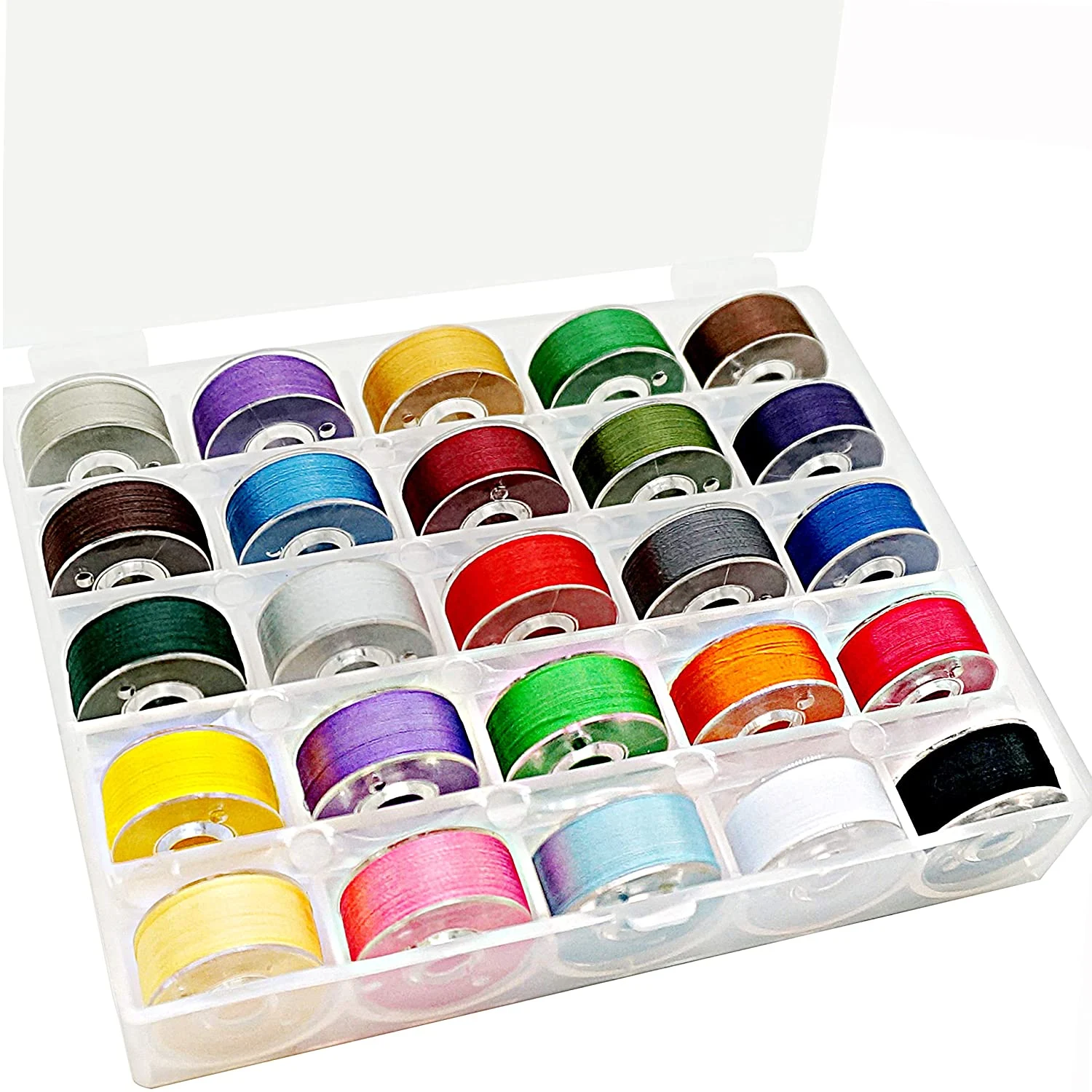
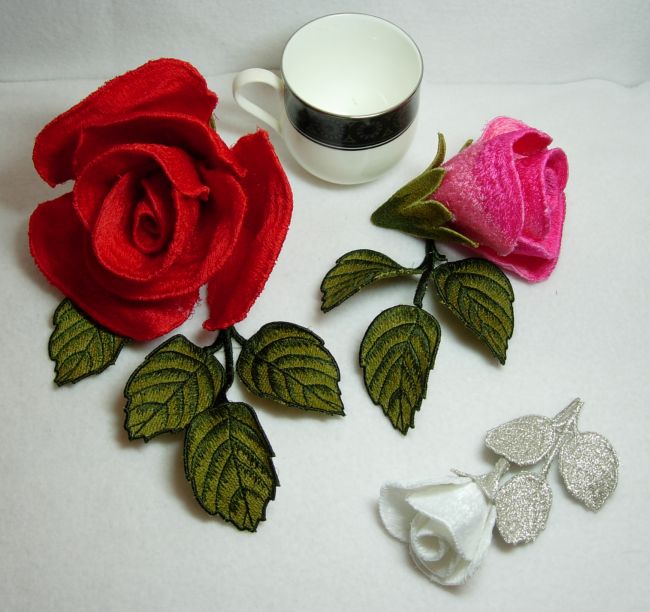

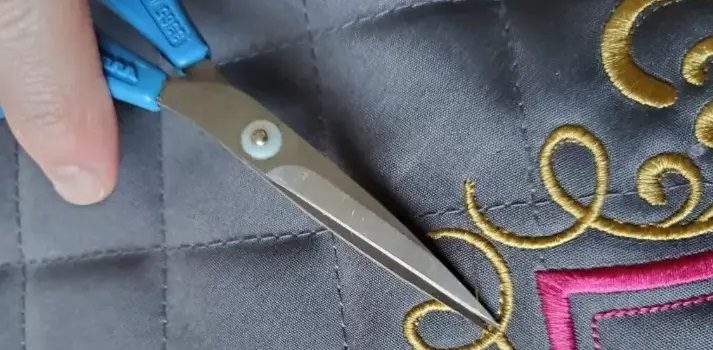

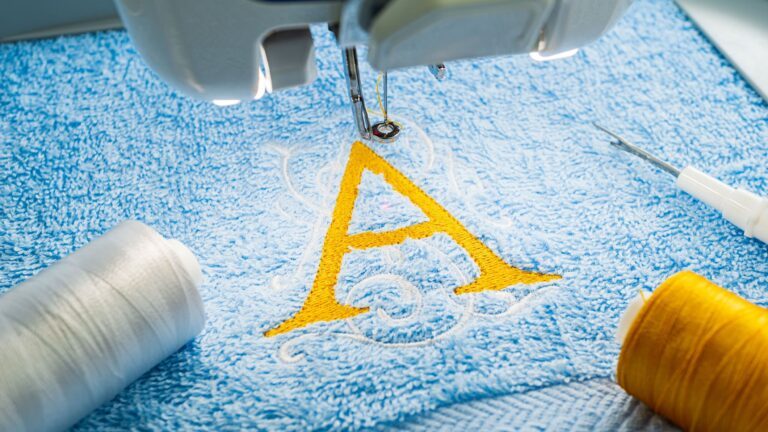

thank you for all these valuable tips
It’s very easy to find out any topic on net as compared to books, as I found this
post at this web page.
I am actually happy to read this weblog posts which contains lots of valuable information
fantastic submit, very informative. I ponder why
the other experts of this sector don’t realize this.
You must continue your writing. I’m sure, you have a
huge readers’ base already!